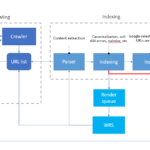Adherence During a Weight Loss Plateau: The Science, Psychology & Strategy Behind Staying Consistent
By Navleen Ghai — Fittr Coach | Clinical Nutrition | Pregnancy & Postpartum Specialist | Weight Loss Plateau Management
Introduction: The Plateau Isn’t a Problem — It’s a Phase
Every person who begins a fat loss journey expects steady, continuous results. But human physiology doesn’t work in a straight line — it works in cycles.
A weight loss plateau is not a sign that your body is not responding; it is a sign that your body is adapting.
During coaching, I’ve seen this consistently:
A client who stays adherent during a plateau always breaks through faster than someone who keeps changing the plan out of frustration.
Why?
Because fat loss is slow, the scale is deceptive, and adaptation is normal.
Plateaus test one thing above all:
👉 Your commitment when the results slow down.
Understanding Weight Loss Plateaus in Depth
What is a Plateau?
A plateau is when your weight remains stable for 3–4 weeks despite consistent diet, training, and lifestyle habits.
This doesn’t mean fat loss isn’t happening — it often means fat loss is being masked by other factors such as inflammation, water retention, or natural metabolic slowdowns.
Why Do Plateaus Occur? A Deep Scientific Breakdown
1. Metabolic Adaptation (The Body Fights Back)
When you lose weight, your body becomes more efficient — meaning it burns fewer calories to do the same tasks.
This is a survival mechanism.
- A smaller body needs fewer calories
- Hormones like leptin drop (reducing energy expenditure)
- Thyroid hormones may slightly decrease
- Hunger hormones like ghrelin increase
This is NOT failure — this is biology.
2. Water Retention Masks Fat Loss
Fat loss is slow. Water fluctuations are fast.
Common reasons for temporary water gain:
- Increased training intensity
- High-sodium meals
- Poor sleep
- High cortisol
- Menstrual cycle fluctuations
- Postpartum hormonal shifts
Many clients actually lose fat weekly but don’t see it on the scale due to water masking it.
3. Reduced NEAT (Subconscious Movement Drops)
When dieting, your brain naturally reduces activity like:
- fidgeting
- walking
- taking stairs
- spontaneous movement
This can reduce daily calorie burn by 200–500 calories, enough to halt progress.
4. Inaccurate Tracking Creeps In Slowly
Not deliberate — but very common:
- Underestimating homemade food calories
- Eyeballing portions
- Forgetting small bites/snacks
- Not tracking weekend meals
- Using inconsistent cups/spoons
- Adding “extra 1 spoon oil” unintentionally
Small inaccuracies create a calorie surplus over the week.
5. Hormonal and Postpartum Shifts
For women, plateaus are more common due to:
- menstrual cycle phases
- estrogen/progesterone fluctuations
- postpartum hormonal rebalancing
- breastfeeding calorie fluctuations
- sleep disturbances
- thyroid changes
This is normal — and expecting linear progress is unrealistic.
Why Adherence Matters More Than Anything During a Plateau
Most people break their plan during a plateau — exactly when they should hold it together.
Here’s why staying adherent is your superpower:
1. Adherence Maintains the Deficit Long Enough for Your Body to Respond
Fat loss is slow. The body needs time.
If adherence drops:
- deficit breaks
- fat loss slows further
- body retains more water
- stress increases
- cravings increase
Consistency fixes this.
2. The Body Needs Predictability Before It Gives Up Stored Fat
During a plateau, your body checks:
“Is this calorie deficit temporary or long-term?”
Only consistent behaviour tells your body:
“Yes, we need to burn fat.”
3. Inches Often Drop Before Weight Drops
Clients often notice:
- looser clothes
- smaller waist
- reduced belly bloating
- leaner arms or face
This is visible fat loss — just not reflected on the scale due to water retention.
4. Adherence Builds Mental Discipline
Plateaus strengthen:
- patience
- resilience
- self-control
- long-term mindset
These qualities matter more than any diet plan.
How to Stay Adherent During a Plateau — A Practical, Actionable Guide
1. Recheck Tracking Precision
Accurate tracking = accurate results.
Checklist:
- weigh food (raw weight preferred)
- use digital scale
- track oils/dressings
- avoid “guessing” portions
- be consistent with homemade calories
2. Fix NEAT (The Hidden Fat-Loss Tool)
Aim for 8,000–10,000 steps consistently.
This single habit breaks more plateaus than any supplement or diet trick.
3. Strength Train, Don’t Overtrain Cardio
Muscle boosts metabolism.
Cardio alone often leads to adaptation.
Follow progressive overload:
- increase reps
- increase weight
- improve technique
- increase sets gradually
4. Optimize Sleep & Stress
Poor sleep → increased cortisol → water retention → scale stuck.
Stress also leads to cravings and overeating.
Checklist:
- 7–8 hours sleep
- magnesium-rich foods
- deep breathing
- 10-minute walk after meals
5. Keep Hydration Steady
Aim for 2.5–3L water daily.
Sudden changes in water intake fluctuate weight.
6. Avoid Drastic Calorie Cuts
Large deficits slow metabolism further.
Better approach:
- reduce 50–100 calories
- adjust macros
- increase steps by 1000
- add 1 set in major lifts
Small changes → big impact.
Emotional and Mindset Strategies During a Plateau
1. Don’t tie your motivation only to the scale
Use non-scale metrics:
- strength progress
- energy
- digestion
- mood
- adherence percentage
- inches lost
2. Remind Yourself: “Stuck Isn’t the Same as Stopped.”
Your body is working internally even when you can’t see it externally.
3. Trust Your Coach and the Data
A coach sees patterns you can’t.
We evaluate:
- step count consistency
- week-on-week calorie intake
- weight trend line
- cycle timing
- training intensity
- water fluctuations
- sleep patterns
Trust the analysis, not the temporary emotion.
When Should You Actually Change the Plan?
NOT when:
- it’s only been 1–2 weeks
- you’re inconsistent
- you’re stressed or sleeping poorly
- tracking isn’t 95% accurate
- you’re in PMS week
- you just increased workout intensity
YES when:
- plateau > 4–6 weeks
- adherence = 90–95%
- tracking accurate
- no weekend deviations
- stable steps
- strength training done right
Only then does a calorie or training adjustment make sense.
Special Section: Postpartum Plateaus
Postpartum mothers face unique challenges:
- hormonal turbulence
- sleep deprivation
- breastfeeding hunger
- diastasis recti considerations
- pelvic floor issues
- slow metabolic recovery
For postpartum clients, I focus on:
- slow deficit
- nutrient-dense foods
- routine over perfection
- realistic expectations
- gradual progression
Postpartum isn’t a race — it’s a rebuild.
Conclusion: The Plateau Is Temporary — Your Discipline Is Permanent
A plateau doesn’t mean your body isn’t changing.
It simply means your body is adapting before it moves again.
Remember:
- “Progress isn’t always visible, but consistency always counts.”
- “Your body may pause, but your commitment doesn’t have to.”
- “Plateaus test your patience—discipline carries you through.”
- “Trust the process, even when the scale stays quiet.”
Breakthroughs happen after weeks of showing up when nothing seems to be happening.
Stay adherent.
Stay patient.
Stay consistent.
Your progress is coming.
Hashtags
#fittrcoach #NavleenGhai #nutritionandfitness #FITTR #clinicalnutrition
#preganancypostpartum #weightlossplateaumanagement #fittrptcoach









